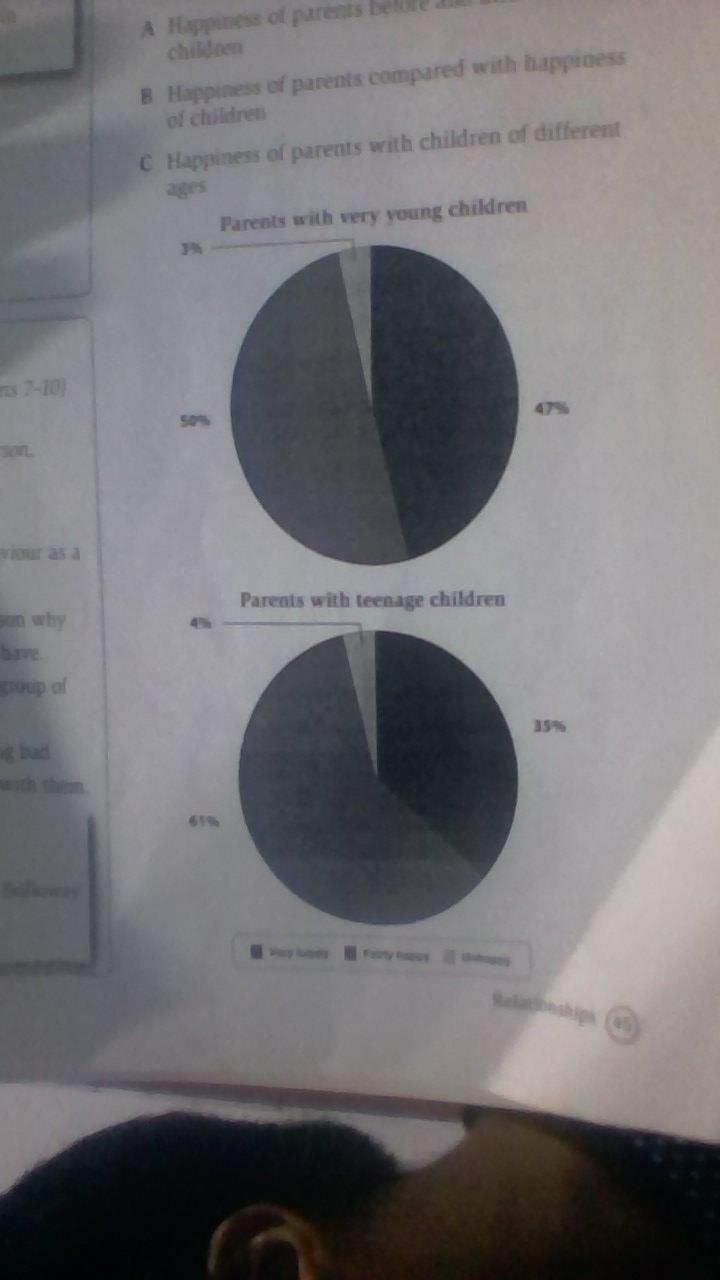The pie chart compares the proportion of parents' happiness with children of different ages. Overall, the most obvious pieces of information are that the parents who have juvenile children are happier than most extremely children. It is clear that only a few parents feel unhappy while they have very young and teenage children.
At first glance, it is evidence that the parents are more likely to own adolescents than children aged extremely young by comparison between 61 percent and 50 percent. On the contrary, the proportion of feeling quite happy of parents having toddler is higher just under a half percent than parents possessing teenage children at more than a third.
In terms to the lowest proportion under one in twenty percent, two groups of children owning different ages only show a bit deviation at one percent. It is evidence that the difference of parents' unhappiness when they have both of them witness a similar feeling.
At first glance, it is evidence that the parents are more likely to own adolescents than children aged extremely young by comparison between 61 percent and 50 percent. On the contrary, the proportion of feeling quite happy of parents having toddler is higher just under a half percent than parents possessing teenage children at more than a third.
In terms to the lowest proportion under one in twenty percent, two groups of children owning different ages only show a bit deviation at one percent. It is evidence that the difference of parents' unhappiness when they have both of them witness a similar feeling.

WIN_20150920_165510..jpg
